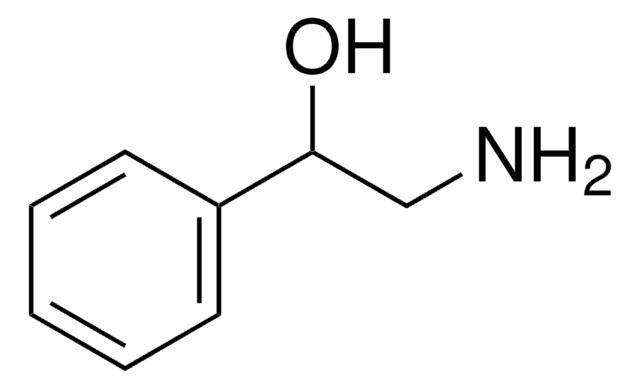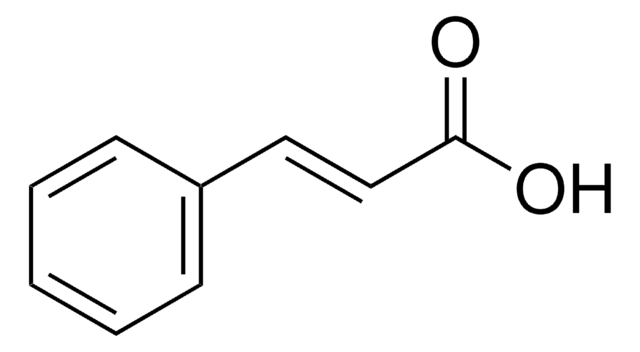95054
Azelaic acid
analytical standard
Synonym(s):
Nonanedioic acid
About This Item
Recommended Products
grade
analytical standard
Quality Level
vapor density
6.5 (vs air)
vapor pressure
<1 mmHg ( 20 °C)
assay
≥98.5% (GC)
shelf life
limited shelf life, expiry date on the label
technique(s)
HPLC: suitable
gas chromatography (GC): suitable
impurities
≤0.5% water
bp
286 °C/100 mmHg (lit.)
mp
106-112 °C
109-111 °C (lit.)
application(s)
cleaning products
cosmetics
flavors and fragrances
food and beverages
personal care
format
neat
SMILES string
OC(=O)CCCCCCCC(O)=O
InChI
1S/C9H16O4/c10-8(11)6-4-2-1-3-5-7-9(12)13/h1-7H2,(H,10,11)(H,12,13)
InChI key
BDJRBEYXGGNYIS-UHFFFAOYSA-N
Looking for similar products? Visit Product Comparison Guide
General description
Application
- Tobacco using gas chromatography coupled to mass spectrometry (GC-MS).
- Topical preparations using reversed-phase liquid chromatographic (LC) with UV-Vis detection.
signalword
Warning
hcodes
Hazard Classifications
Eye Irrit. 2 - Skin Irrit. 2
Storage Class
11 - Combustible Solids
wgk_germany
WGK 1
flash_point_f
410.0 °F - closed cup
flash_point_c
210 °C - closed cup
Choose from one of the most recent versions:
Already Own This Product?
Find documentation for the products that you have recently purchased in the Document Library.
Customers Also Viewed
Our team of scientists has experience in all areas of research including Life Science, Material Science, Chemical Synthesis, Chromatography, Analytical and many others.
Contact Technical Service













